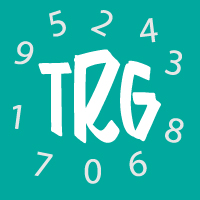About Heads or Tails
Have you ever found yourself in a situation where you had to make a quick decision, settle a bet, or determine an outcome? If so, you’ve probably heard the phrase “Heads or Tails” before. This simple phrase is commonly used when flipping a coin to make a decision, and it has become a popular decision-making tool over the years. In this blog post, we will explore the historical origins of coin flipping and how it evolved into the popular decision-making tool we know today.
Historical Origins of Coin Flipping
Coin flipping can be traced back to ancient times when coins were used for divination or fortune-telling. In ancient Rome, for example, people would flip a coin to determine the outcome of a decision, such as whether to go to war or not. The coin would have an image of a deity or a leader on one side (the “head”) and a symbol or inscription on the other (the “tail”).
Over time, the practice of flipping coins evolved into a game, often used to settle disputes or make quick decisions. The association of “Heads or Tails” with the game of coin flipping became common, as players would call out their chosen side of the coin before it was flipped. In some cases, the coin would be spun instead of flipped to make the game more exciting.
The Modern Use of “Heads or Tails”
Today, flipping a coin is a common way to make decisions, from settling a bet to deciding who gets to go first in a game. The phrase “Heads or Tails” remains a popular way to refer to this simple, yet effective, form of decision-making. It’s easy to see why coin flipping has stood the test of time – it’s quick, simple, and impartial.
In addition to its use in casual settings, coin flipping is also used in more formal situations. For example, some sports games use a coin flip to determine which team gets possession of the ball first. In some legal cases, a coin flip is used to decide which side presents their case first.
The enduring popularity of “Heads or Tails” is also evident in popular culture. The phrase has been featured in countless movies, TV shows, and books, and has become synonymous with decision-making. It’s not uncommon to hear the phrase used in everyday conversation, even when a coin isn’t present.
Conclusion
In conclusion, the origins of “Heads or Tails” can be traced back to ancient times when coins were used for divination or fortune-telling. Over time, the practice of flipping coins evolved into a game, which has become a popular way to make decisions in modern times. The phrase “Heads or Tails” remains a common part of our vocabulary, reminding us of the enduring importance of coin flipping in decision-making.
It’s important to understand the historical origins of common phrases like “Heads or Tails” to appreciate their cultural significance. These phrases may seem simple, but they often have deep roots in history and tradition. By understanding their origins, we can gain a deeper appreciation for the words we use every day.
In today’s fast-paced world, we often rely on technology and complex decision-making tools to guide us. However, sometimes the simplest solutions are the best. Coin flipping is a quick, easy, and impartial way to make a decision, and its popularity has endured for centuries.
So next time you find yourself flipping a coin, take a moment to appreciate the rich history behind this simple yet powerful tool. The phrase “Heads or Tails” may seem insignificant, but it has played an important role in decision-making throughout history and continues to do so today.
